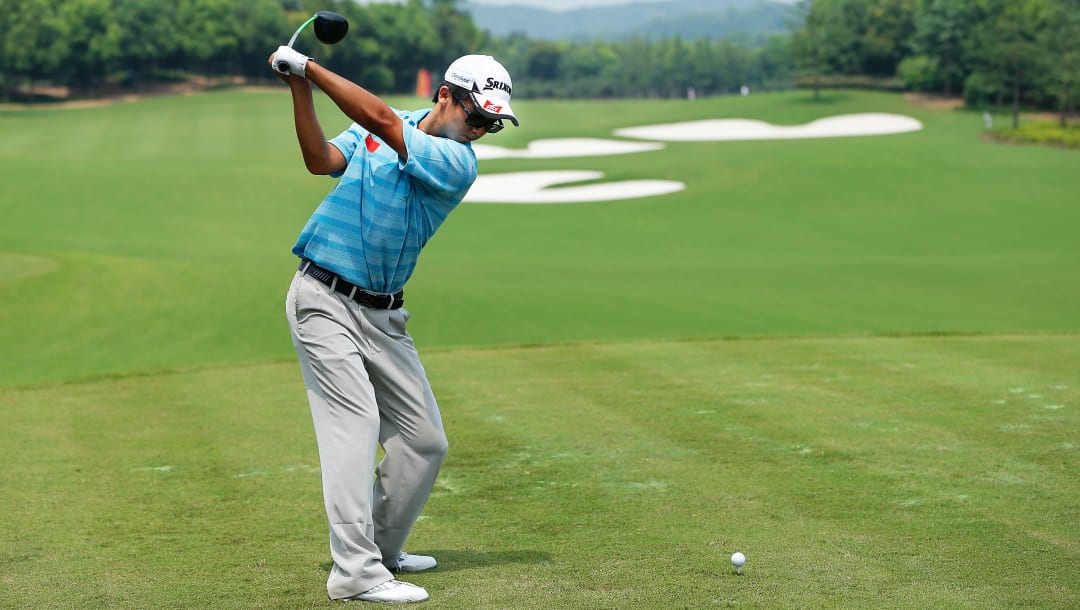
Rotational Strength Training for Golfers
It is no secret that rotation is an important part to anyone’s golf swing, but what are we doing to improve our rotation? When golfers want to hit the ball farther or have a more fluid swing, buying the newest club is the first thing that comes to mind. By doing so, small improvements may be noticed, but was the problem actually solved? Certain issues on the golf course may not be due to our hardware, but from some type of functional limitation. Being consistent with a proper stretching and strength training routine is important for golfers to remain mobile and strong throughout a round. Once the proper range of motion that is required for a golf swing is obtained, a strength component can be added, specifically rotational strength. By developing core stability and rotational strength, more power is generated during our swing. An increase in power means an increase in distance, something every golfer desires. This blog is not ignoring the importance of proper mobility in a golf swing; its goal is to focus specifically on exercises that develop a stable core and rotational strength. Below are four exercises to add to your routine.
Stability Ball Twist with Dumbbell
Start by lying with your shoulders on a stability ball and your hips off the ball in a bridge position. Keep your feet slightly wider than hip width for a stable base. Press a dumbbell straight ahead at chest level. While maintaining a strong core and keeping your hips in a bridge position, slowly rotate towards one side. Keep your arms straight with little movement through the hips. Keep your feet pressed into the floor. Repeat 5 times in each direction.
Half Kneeling Cable Lift
Start in a half kneeling position with the knee down that is closest to the cable machine. Maintain proper hip, knee, and ankle alignment on the leg that is forward. While maintaining a strong core, bring the weight towards your chest and then simultaneously rotate and push the weight away. The bar should be at eye level upon full rotation. Control the movement through your core and do not twist through your low back. Repeat 10 times on each side with a challenging but comfortable weight.
Half Kneeling Resistance Band Rotation
Start in a half kneeling position. The leg closest to the wall will be the leg in front. Maintain proper hip, knee, and ankle alignment in the front leg throughout the movement. Place a ball between your leg and wall. Grab a resistance band and create a little tension with your arms pressed out shoulder width apart and slightly lower than shoulder height. Keep your front knee pressing into the ball, and rotate your upper body away from your front leg. There should be little movement through your hips. Continue to press your knee into the ball while the arm that is stationary remains in position. Follow the movement with your eyes throughout the rotation. Repeat 10 times on each side.
Cable Rotations
Start with your feet shoulder width apart with your arms straight and slightly lower than shoulder height. While maintaining a strong core, rotate away from the machine. Make sure the movement is not through your low back. Brace through your core and maintain proper breathing. Repeat 10 times on each side with a challenging but comfortable weight.
Adding rotational exercises to your golf program will increase your power, helping with your ball speed and distance. The exercises mentioned in this blog are great for learning how to keep our core stable while rotating. Training core stability in these directional patterns is important for a fluid swing. Next time you wonder if your equipment is the issue, try to fine tune the little things we often overlook!
Pat Sturdahl worked in an outpatient physical therapy setting for over seven years. He enjoys working with clients to help improve their mobility, stability and strength. Pat has experience working with local high school teams where he previously ran “Speed Schools.” This training focused on sport specific movements and plyometric drills.

